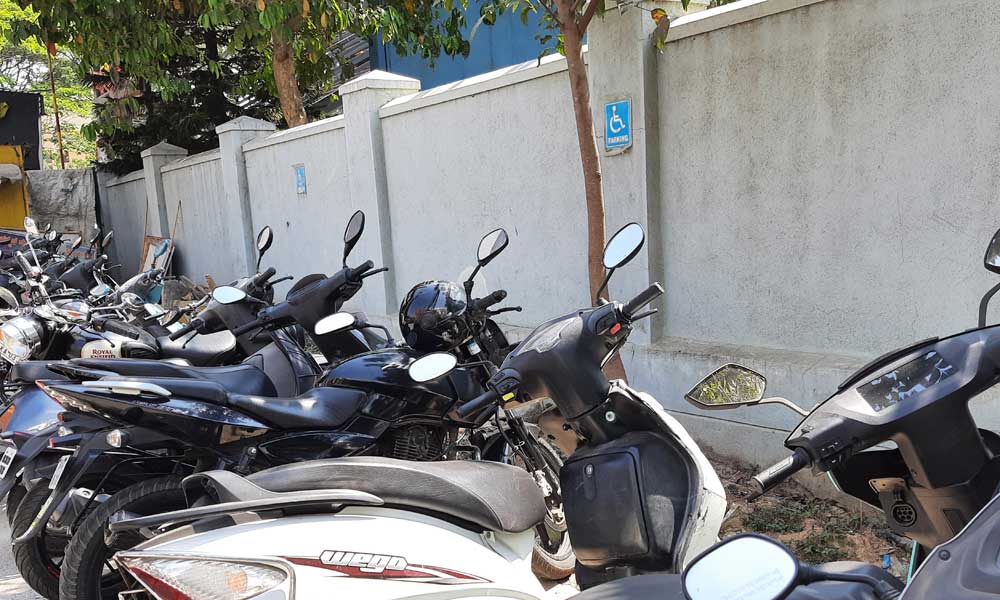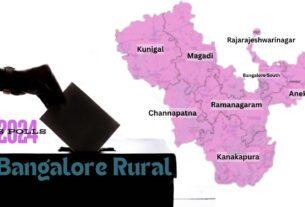Lack of parking for the disabled leads to fewer disabled drivers in the city.
Two years ago, Karthik got into a car accident. In that accident, he suffered a spinal injury that led to losing the ability to use his legs and also to drive. After lot of physiotherapy his life almost went back to normal.
“I watched X-Men movies with my son and was inspired to get my life back together after watching Professor X (a physically disabled character).”
He started training and learning to drive the car again. “I love to drive,” he said.
“Whenever I go out and take my car, half of the time I’m searching for any spot where I can park. The usual parallel parking is difficult to use as I need space so that I can put my wheelchair out, and then park the car. As it’s difficult, I have stopped driving,” he added.
Lack of priority parking:
Satish, who runs a pay and park service in Byrathi, said that he runs it on a contract basis. There are no disabled drivers, so it’s not profitable to keep a space vacant when there are more two-wheelers that can be parked.
Nidda who looks after pay and park on 28, Field Marshal Cariappa Rd, Shanthala Nagar, Sampangi Rama Nagar, said that there is no reserved parking for handicapped drivers as not many of them come to use the parking.
Vishvesh Sekhar, a disabilities rights lawyer, said, “The Rights of Persons with Disabilities Act, 2016 allows people to live independent lives, but there are a whole lot of systemic problems. One such problem is the lack of priority parking for disabled.”
The office of the Directorate of Urban Land Transport (DULT) said that they haven’t fully implemented the parking policy and that they ask contractors to reserve space, some follow and some don’t.
Tedious licenses procedure:
Sekhar said that the Motor Vehicles Act (MVA) doesn’t give licences to disabled people without medical certification. Even a learning licence needs a medical certificate. This is issued only in government hospitals. It’s the first hurdle for disabled people.
“The next step is to get a permit from the RTO to drive. Disabled people with orthopaedic disabilities can drive only after modification of their vehicle to suit their needs. This modification needs approval from the RTO. Then they issue driving licences that have the endorsement,” he said.
Karthik said that it was not possible as getting a driving licence for disabled people is very difficult. “It’s a tedious and difficult process that involves lots of visits to the Regional Transport Office (RTO). There is lots of corruption, and if you don’t bribe them, they will keep rejecting your application,” he added.
The guidelines from the RTO mention what modifications need to be made.
Sekhar said, “All this is because the slip between the cup and the lip still exists. This discourages them and reduces their mobility, which is already a big challenge in urban areas. It contradicts the new disability law, which is meant for increasing mobility.”
Lack of awareness among people in society:
Sekhar said that there exists a stigma in our society that looks at people with disabilities negatively. “There are non-governmental organisations (NGOs) that work in these areas, but it’s also on us (society) to make them feel inclusive,” he said.
Ravi, who works with the Association of People with Disabilities (APD) NGO, said, “We provide them with training so that they can be independent and don’t need support. We have a vehicle modification unit. In this, we convert the vehicle as per the needs of the person and train them to use it. It’s not to learn to drive from scratch; they already know how to drive, and we just help them modify them (their driving skills). It also involves physiotherapy.”




